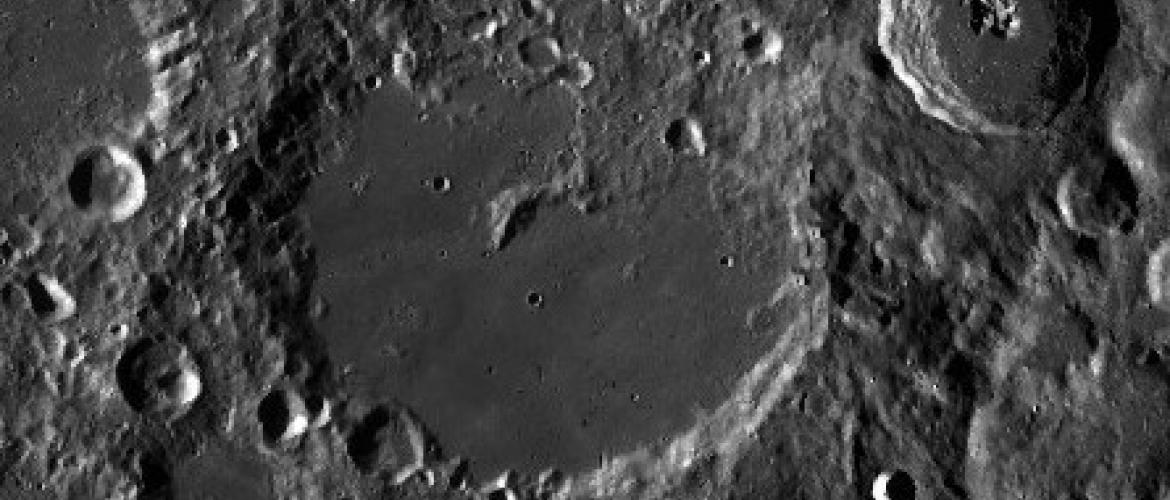China explores lunar craters
May 17, 2019 | Expert Insights

Background
As natural resources on Earth continue to deplete, governments across the world have turned to space to look for scarce minerals and energy sources. The closest celestial body to Earth, the Moon, is a prime target. Several countries have developed capabilities for space exploration, including the US, Russia, China, Japan and India, as well as the European Union. These countries understand that to explore the furthest reaches of space, honing capabilities on closer celestial bodies is essential. The US has set a goal to put astronauts on the Moon’s the South Pole by 2024 while countries like China and Russia have also prioritised space as a frontier that they need to better understand.
In the 1960s and ’70s, the US and the Soviet Union conducted lunar exploration programs that yielded significant amounts of scientific data. This data, however, revealed very little about the Moon’s rocky mantle. The mantle is believed to be the frozen remnant of a magma ocean that existed over 4 billion years ago.
Of the 1,737 kilometre radius of the Moon, about 300 kilometres is a dense metallic core, while 40 kilometres make up the lunar crust. This means that the remaining 1,397 kilometres consist of the mantle. Much of this data has been corroborated from the Apollo space missions conducted by the US.
Analysis
China’s Chang’e-4 mission landed near the South Pole of the lunar surface in January 2019. The spacecraft is the first to land intact on the far side of the Moon. Consisting of a lander and rover (Yutu-2), this is an ongoing mission. The Yutu-2 has a Visible and Near Infrared Spectrometer which can determine the chemical composition of rocks by analysing the light reflected off them.
The mission explores the Von Kármán crater. Quarter of the Moon’s circumference contains the 2,300 kilometres-wide South Pole Aitken (SPA) Basin. Although it is unclear how old the SPA Basin is, it is believed to be at least 3.9 billion years old, carved out by an asteroid about 170 kilometres-wide. Within this Basin is the Von Kármán crater - about 180 kilometres in diameter. The crater is named after Theodore von Kármán, the PhD advisor of Qian Xuesen, the father of the Chinese space program. It is believed that the crater holds clues to the composition of the Moons interior because asteroid collisions on the lunar surface can excavate mantle materials from deep underground. The first scientific results of China's mission to the Von Kármán crater were recently made public.
The results “found that the material of the Chang’e-4 landing site is mainly composed of olivine and low-calcium pyroxene. This mineral combination is the candidate mantle-derived material.” Both olivine and pyroxene are believed to be the first minerals to freeze from the Moon’s magma ocean. Scientists believe that as earlier orbit-based surveys of Von Kármán showed that its floor is made of lava from volcanic eruptions rather than the mantle, the material may have come from debris from another nearby crater.
If the finding is confirmed, the presence of mantle material on the lunar surface can provide significant insight into the structure of the Moon. This new data can provide information about the actual composition of the mantle and the resources it may hold to sustain life.
For China, the finding allows it to justify its cost, even helping strengthen the argument for future missions to the lunar surface. It demonstrates, both to itself and other space-capable powers, that China is capable of planning and executing challenging scientific tasks. China is expected to launch another mission to the Moon, called Chang’e-5, in late-2019. The Chang’e-5 mission is intended to bring back sample’s from the lunar surface in a first-of-its-kind operation for China. However, the mission will target the Moon’s near side, instead of the far side focus of Chang’e-4. Chang’e-4 will continue to operate on the lunar surface, with Yutu-2 expected to survive into late-2019.
Counterpoint
Some scientists are not convinced that the materials detected by Yutu-2 definitely come from the lunar mantle. They argue that the impact that created the SPA Basin could have led to the formation of the material. While mantle-like, these may differ from the Moon’s mantle. Additionally, previous predictions suggested a different composition caused by the crystallisation of the magma ocean. These scientists believe that the only way to know where the materials detected came from, will be by collecting samples and bringing them back to Earth.
Assessment
Our assessment is that the Moon's mantle holds keys to whether the lunar surface is suitable for a human colony; simply put, is the Moon prone to earthquakes that would make long-term human settlement dangerous? The Moon's mostly-mantle composition has not been adequately researched since the lunar race in the 1960s and '70s.
For China, we estimate that the findings reported by the mission can only be verified if samples are brought to Earth.
The mission can also answer questions about the viability of future space exploration and the potential for the Moon to be a source of valuable resources. However, given that the Moon’s mass is essential to the environment of the Earth, we believe that mineral extraction from the lunar surface on a large-scale must be avoided. This is especially important in the case of the Moon because it may be prone to earthquakes. We feel the Moon must be only be used to build up capabilities to get to Mars, where initial on-the-ground findings show some potential for resource extraction.
India Watch
India’s lunar exploration program is called Chandrayaan. The first stage of the program launched a lunar orbiter called Chandrayaan-1, which mapped the Moon and profiled its atmosphere. The mission also launched a Moon Impact Probe which discovered water on the lunar surface. The second phase, expected to be launched sometime in July 2019, is expected to make a soft-landing on the Moon. It will then deploy a robotic rover to the lunar surface.








Comments